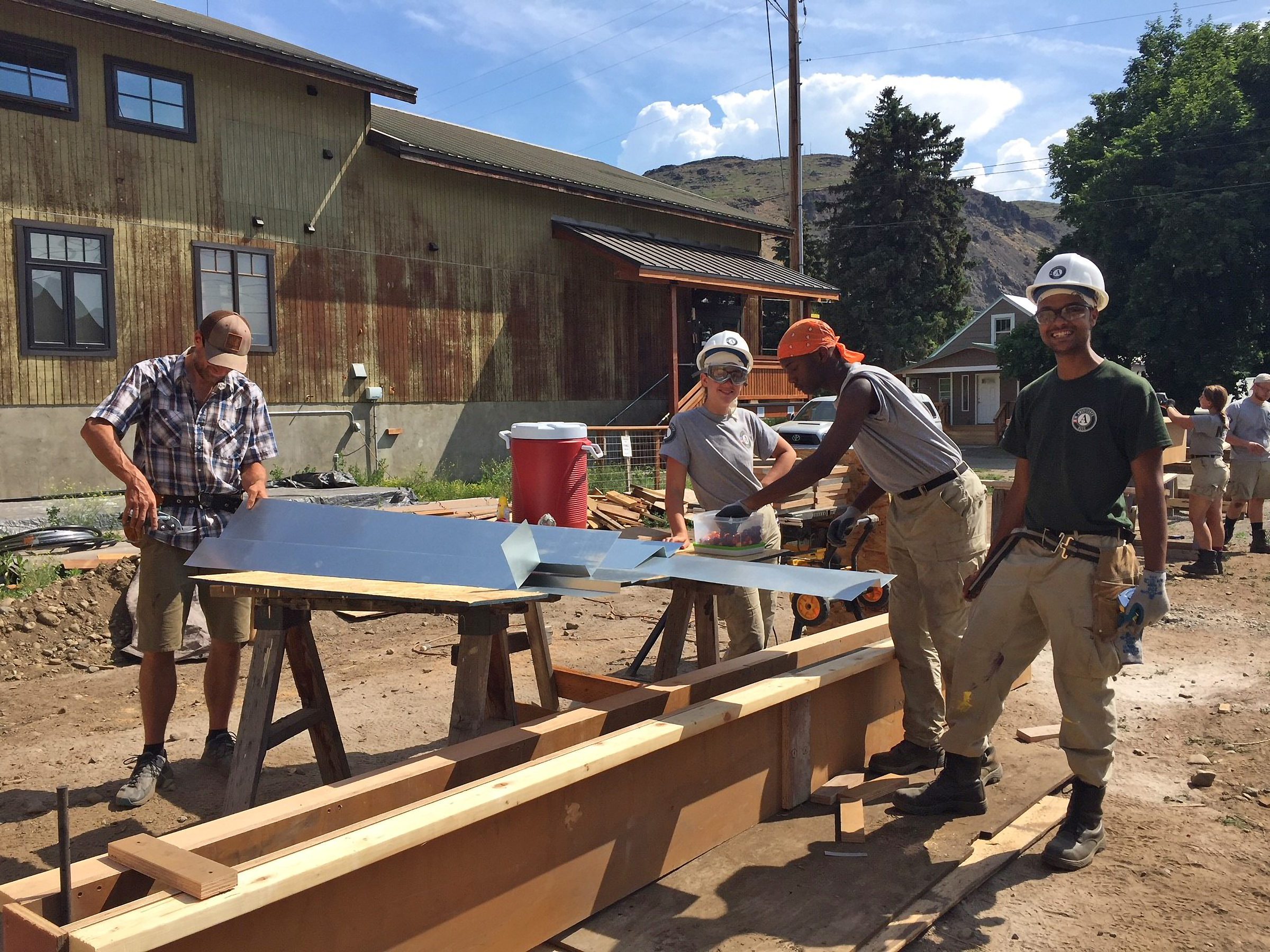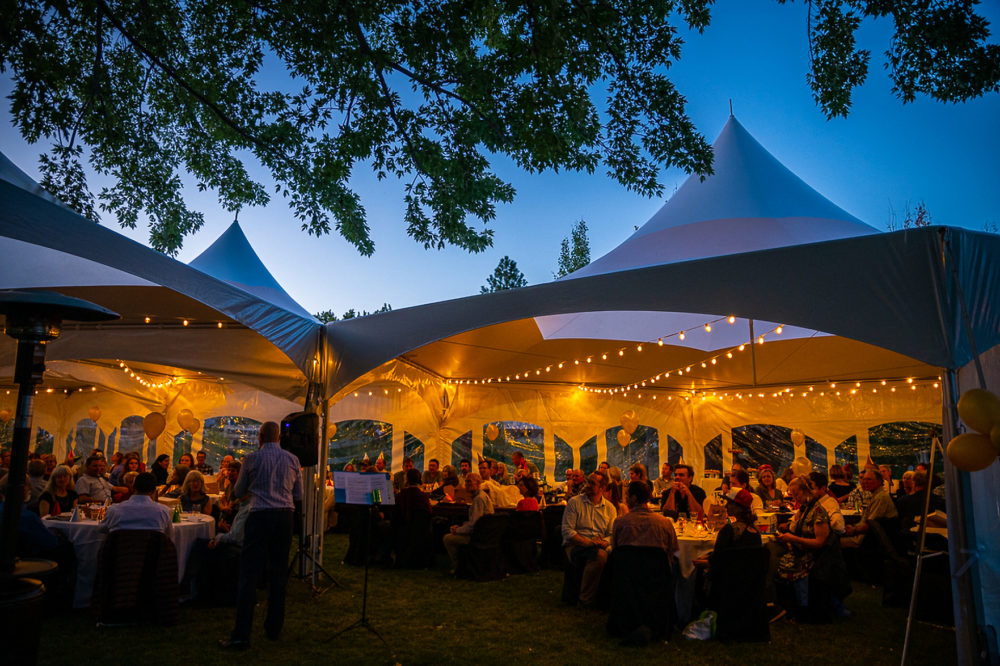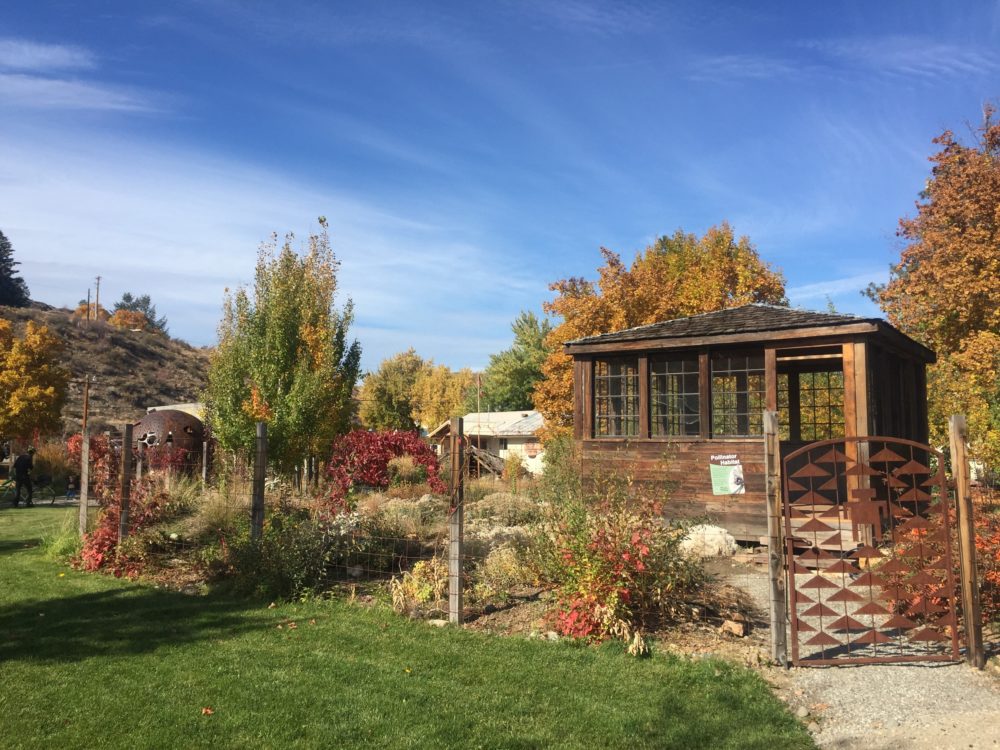TwispWorks: A Model for Rural Economic Development

AmeriCorps volunteers learn new skills and assist with campus renovations.
By Chris Schneider, Director of Marketing and Development, TwispWorks
Nestled in the foothills of the North Cascades, the Methow Valley ranges from lowland prairies and shrub steppe at the mouth of the Columbia River to mountainous spires and breathtaking vistas near Washington Pass. Several small towns with a community of approximately 5,600 people lie scattered along the Methow River. An eclectic mix of Indigenous people, ranchers, and homesteaders, as well as recent transplants, the Methow’s people have chosen a lifestyle based on rural living. They appreciate the land and their community. If you haven’t visited the Methow Valley, you will be charmed.
Like many places in the rural West, as industries like mining, logging, ranching, and farming began to wane, recreational tourism became an important alternative for the local economy. Today, close to half a million people come to the Methow Valley each year to take advantage of a wide array of outdoor recreation, including hunting and fishing, hiking, camping, cross-country skiing, mountain biking, rock climbing, and white-water rafting. The Methow also offers rich arts and cultural opportunities, including local galleries, music festivals, theater performances, and fine dining.
While a vibrant tourism economy is beneficial, it also creates challenges. An economy rooted in tourism is subject to wide seasonal fluctuations, has greater sensitivity to the health of the national economy, and is made up primarily of service industry jobs that rarely provide a living wage. By the year 2000, the Methow’s economy was fragile, lacking diversity and clear pathways to stability and economic success.
During this time, the U.S. Forest Service relocated their main headquarters from the town of Twisp to Winthrop. The 6.4-acre ranger station with several residences, machinery warehouses, and administrative buildings was largely abandoned for the next 10 years. In 2009, the Forest Service put the site up for public auction. Inspired to preserve the property, a citizen task force formed to create a master plan for the site, now known as TwispWorks. Hundreds of people contributed their vision for the campus, and a clear mission emerged: to increase the economic vitality throughout the Methow Valley by developing the site as an economic engine and community hub, delivering programs that would support individuals, businesses, and industries. An anonymous donor stepped up to purchase the property for $1 million with the agreement that if within our first 10 years, our campus operations could be self-sustaining through rental and earned income, they would forgive the loan and hand over the deed.
Today, TwispWorks has become a prominent site in the community, both as a placemaker and as an institution that supports economic vitality. As a placemaker, TwispWorks community and staff renovated more than 50,000 square feet of interior space to incubate businesses and modernized the campus’ infrastructure. Today, the 17 buildings on the TwispWorks campus are home to more than 35 organizations from media companies and working artists, to manufacturers who collectively employ more than 100 people. TwispWorks plays a critical role in the local economy as a center for education, innovation, and creativity.
As a supporter of economic vitality, TwispWorks delivers several programs that support local businesses and entrepreneurs. For example, Methow Made provides sales, marketing, and retail support for locally made products from jewelry and birdhouses to farmers selling value-added products like cider and cheeses. The Methow Investment Network connects businesses looking to start or grow with investors who believe in putting their dollars to work locally. In just its second year of operation, the Methow Investment Network facilitated more than $2.75 million in loans to local businesses who otherwise may not qualify for traditional lending programs. We are also creating programs to help young people build life skills as well as training and apprenticeship opportunities, ensuring that local businesses can attract and retain skilled workers. Finally, we advocate for critical issues in our community, like the economic impacts of climate change and closing the digital divide by bringing reliable internet to underserved communities.
Today, our vibrant campus reflects a commitment to sustainability and environmental stewardship. In the renovation process, we used existing and “upcycled” materials whenever possible. We are home to a community solar program and an electric car charging station. Our gardens feature native, drought-tolerant plants, and while we’ve modernized the buildings on campus, we also pay tribute to our rich heritage as a U.S. Forest Service Ranger Station through signage and displays that share information about the campus’ history and importance in the community.
During the summer of 2019 we celebrated our 10th anniversary. Our campus operations are self-sustaining, and, per our agreement with our anonymous donor, we received the deed to campus, ensuring that TwispWorks will continue to serve the needs of the Methow Valley for decades to come!
There’s a lot to do here! People can enjoy our community plaza and relax with a picnic lunch while kids play in the outdoor water feature. Diners can order Asian-inspired plates from the Fork Food Truck or have a beer at the Old Schoolhouse Brewery taproom. Shoppers can visit local artisans in their workshops or attend classes on nature journaling and honeybee production. TwispWorks is also home to the Methow Valley Interpretive Center, featuring exhibits on the natural and Native American history of the Methow Valley.
In 2020, we will complete our campus renovations with the construction of an outdoor performing arts pavilion. Working in partnership with local arts organizations, we’ll offer a wealth of arts and cultural programming from Memorial Day to Labor Day weekends, including musical performances, live theater, and art shows – all for free! There is always something to see or do at TwispWorks.
Each year, 15,000 people visit TwispWorks, and if you’re not one of them, you need to check us out! You can start by visiting our website at twispworks.org. TwispWorks is a model for what successful rural economic development looks like and shows what’s possible when people and place come together.

“Dinner @ TwispWorks: A Cultivated Evening” was held to celebrate 10 years of TwispWorks and featured local food and beverages.
The TwispWorks campus features public space and public art like the massive steel sphere, “Entro,” by sculptor Bernard Hosey (left) and “The Lookout” by Tori Karpenko (right).
